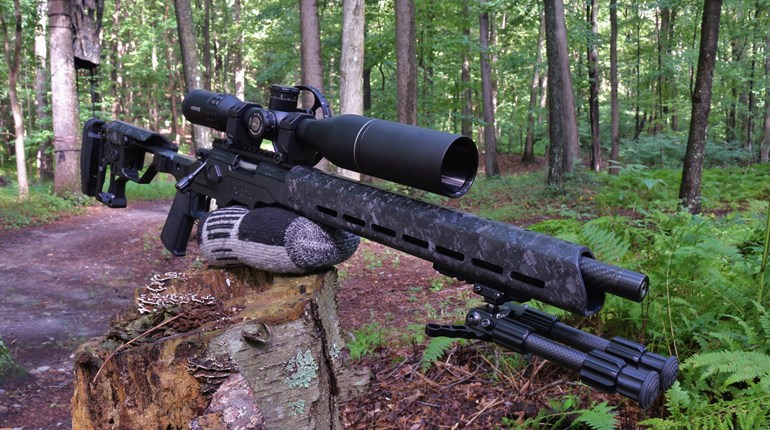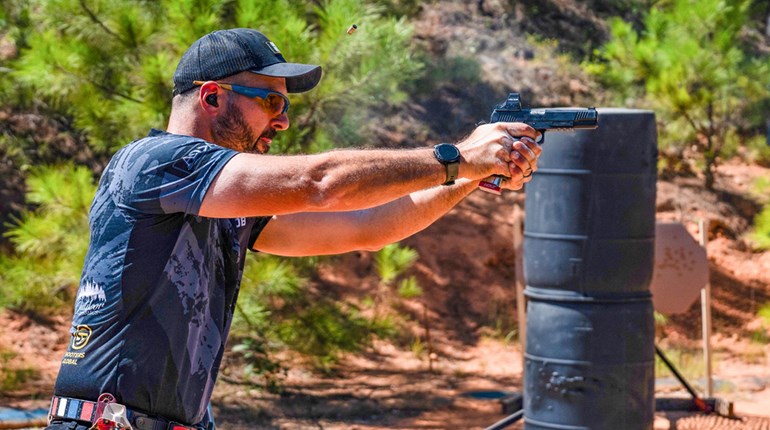
Appendix carry, inside-the-waistband, strongside, shoulder holster... All are viable methods of carrying your prefered handgun concealed. Which is best? Decide for yourself by trying them out rather than simply following trends.
Back when I got into this business, defensive shooting was all about revolvers. About all the novice had to remember was that Colt cylinders turned clockwise while Smith & Wesson cylinders went the other way. Firearm instructors had worked out quick ways to dump empties from the revolver and reload from cartridge loops. Then, along came speedloaders and it was back to the drawing board as we figured out the best way to deploy and carry them. Nowadays, the DA revolver is seeing a resurgence of popularity, and consequently we are finding that this current generation of semi-automatic-oriented shooters are having to relearn defensive revolver skills.
One of the challenges with which trainers are faced is popular trends in defensive gear and techniques come and go. A lot of it is good and some of it is, well, not so good. It can often be a real challenge to figure out what works and what doesn’t work. The trainer is further challenged by the need to figure out the best way to make things work for students.
With the advent of the Modern Technique of the Pistol, Jeff Cooper emphasized the importance of using sights in a gunfight. He taught that a positive draw stroke and the flash sight picture was the best way to stop even a close-range gunfight. Prior to that, point shooting had been all the rage, and many resisted the idea that using sights was a superior technique. Over the years, many people have survived violent attacks through judicious use of their pistol sights, proving this to be a trend that has saved lives.
One of the defensive trends that didn’t fare so well was the use of small-of-the-back (SOB) holsters. These rigs positioned the pistol near the mid-line of the back and tended to make the handgun, even big handguns, quite concealable. However, it was soon discovered that these rigs could be mighty uncomfortable for folks who spent a lot of time seated. Even worse was what might happen if the armed citizen was knocked down or fell down. Positioned the way it was, the SOB holster would allow the handgun to impact the spine, with the potential for causing a severe injury. And, even if injury did not occur, the shooter is now lying flat on his or her back, on top of the gun—not the best position to be should it be needed quickly.
While we’re on holsters, another trend that trainers had to deal with was the popularity of the ankle holster. At first blush, this appears to be an extremely good way to conceal a small handgun and, in fact, it is. The problem for the defensive shooter came with movements used to draw and deploy the pistol. To draw the gun from an ankle holster, the shooter must either kneel, bend way over or raise their leg. None of those positions are conducive to coming out on top of a criminal attack. Armed citizens have since learned that an ankle holster may be a good way to carry a second gun, but it is not an ideal location for a primary handgun.
One of the trends that has most affected training techniques was the introduction of the striker-fired pistol, specifically those with no external safeties. Time has shown that these are dependable, serviceable defensive tools. However, in the early days a lot of negligent discharges (NDs) occurred because shooters did not realize the need to protect the trigger at all times. More than any other kind of defensive handgun, it is critical with striker-fired pistols that the trigger finger be nowhere near the trigger until the sights are on target and a decision has been made to fire.
In addition, NDs also occurred during the re-holstering process when clothing or a portion of the holster came in contact with the trigger. It is now almost a universal method among trainers to teach defensive shooters to re-holster their handgun (regardless of type) slowly and carefully to make sure that nothing interferes with the trigger.
Nothing I have said should be construed to be a condemnation of striker-fired handguns. It merely points out that the defensive shooter needs to learn proper and safe management skills for the type of gun he or she chooses to carry.
A current defensive trend that effects training is wearing the handgun in front of the hip bone, under an untucked shirt, often called appendix carry. This is an excellent concealment position and, with practice, the pistol presentation can be quite fast. Further, it is much easier to defend against a gun grab when carrying in this manner because both hands and arms can protect the gun.
The defensive shooter, however, must develop a positive, quick method of clearing that covering garment in order not to fumble the draw. The support hand is used, in one of several methods, to clear the covering garment and whatever technique is used has to be practiced for full effectiveness. And, since an ND has the potential for very serious injury, training for safety is critical.
It is pretty cool that we see so many new guns, holsters and techniques available to the defensive shooter. Before we switch to new gear and techniques, though, it is important to consider safety and practicality. And, it is always a good idea to seek professional training.




































